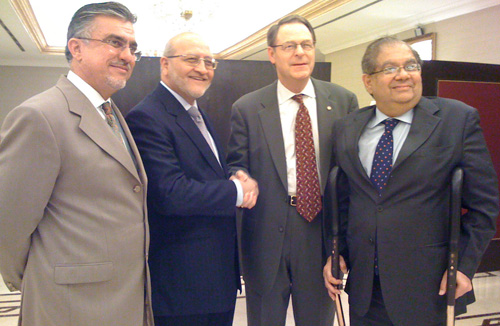I have a self-imposed rule that I don’t include the names of companies on this blog if I am slapping them around for being stupid or mindless in their approach.
Here’s a case of PR that is pretty well executed, albeit in a highly conventional way, but misses the opportunity at hand.
PlayNetwork is a Seattle-area company in the business of blending audio and video to create an overall experience in a retail environment – something that I believe is a huge growth part of this digital signage sector. Many chains have audio entertainment and messaging. Not that many, yet, have video. Very few have the two working seamlessly together. The guys who do that well, and reduce the overall offer down to one vendor, one bill, one throat to choke, are on to something good.
So we have Play announcing this week it’s people have deployed PlayNetwork’s Serenade Service to deliver music and messaging content in all of the Dickey’s Barbecue Pits around the US.
The original Dickey’s opened in Dallas in 1941, with a simple goal – “Serve barbecue so good people will crave it.” By harnessing the power of Serenade’s user-friendly and secure web-based interface, Dickey’s embeds that timeless mission into the music and promotional messages that play in all sites. These promotions, narrated by Roland Dickey himself, bring the heritage of Dickey’s to each individual location. Dickey’s also uses the Serenade tool to control their messaging on-hold content, extending its brand experience beyond the lease line to fans placing phone orders.
The release says the deal enables Dickey’s to serve up a uniquely Texan taste, smell, feel and sound.
To complement the popular Texas barbecue menu, PlayNetwork designed a music concept deeply rooted in Americana, mixed with a hefty dose of classic Southern rock, blues, and boogie-woogie, a Texas-style Western swing. There is no mistaking the Texas roots of Dickey’s Barbecue after listening to this home-grown collection of songs. The sounds reverberating through the restaurants are as distinctive as the taste and smell of Dickey’s Signature Beef Brisket – it’s down-home Texas barbecue.
Great. Sounds very cool.
And as a blogger who might even write about this – one of the objectives of PR – I scroll down the release looking for images, and ideally some video.
Nothing.
There is nothing inherently wrong in this release. The “global leader” thing makes me and other journalists/bloggers immediately yawn, but Play actually IS a global leader in this narrow part of the sector.
However, a company that is expressly in the business of teasing the eyes and ears of consumers really, really should at minimum have PR that offers images, and with the capabilities and cost of teeny camcorders and the ease of YouTube and other video channels, doing a basic video should be fundamental.
You’ve done some good, interesting work. Don’t just tell them, show them.

